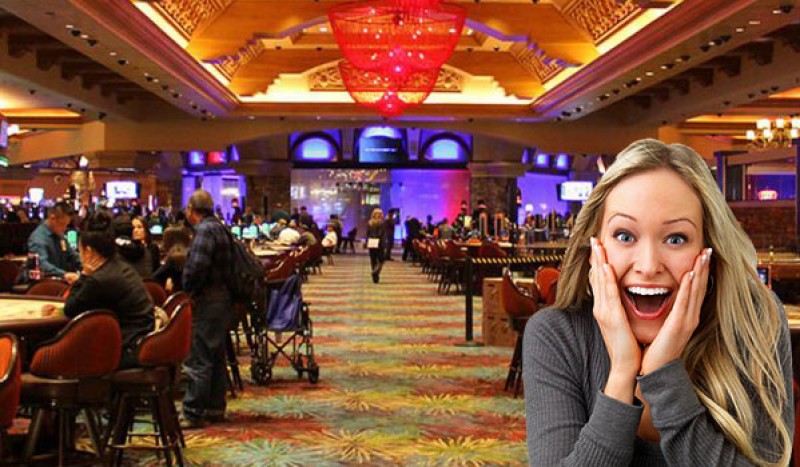Psychology behind Casino Design

Casino layouts are carefully considered to encourage players to gamble and in the last 20 years, there have been notable changes in approach as casino owners give more weight to the psychology behind casino design.
Anyone who has spent any time looking around any casino venue 10 years ago would note there are no clocks, no natural light and maze-like layouts. These are classic design tricks to detract the gambler from noticing how long they have been playing and to make it more difficult to escape the lure of the games.
The Book Which Re-defines the Art of Casino Design
Bill Friedman “wrote the book” on classic casino layout, which is commonly referred to as Gaming Design. The former gambling addict spent 20 years researching over 80 Nevada casinos, tracking the design of casinos over the history of gaming from when it was first legalised in the State until the 1990s. Friedman analysed the elements of casino design, which were common to the most successful casinos, and was able to identify the impact of design and how it impacts on player count. The findings are published in a 630-page book called Designing Casinos to Dominate the Competition, which set out his International Standards of Casino Design.
Friedman’s observations are based on analysis of total casino win, slot win, numbers of slots, slot occupancy rate and player count. He also attempted to evaluate how many gamblers were coming from competitors by comparing slots-to-room ratio and players-to-room ratio.
Friedman’s Gaming Design is based on thirteen principles which have been widely accepted since the 1970’s. These casino design principles match all of the stereotypes held about casinos. He highlights the advantages of maze slot layouts, the importance of being in a crowd, low ceilings are better than high ceilings; slots are best placed near to the entrance to name just a few.
More recently some of Friedman’s observations have been challenged and casino design is evolving as a result of understanding the psychology of gamblers.
Roger Thomas is credited with re-inventing the modern casino which was borne of an intimate understanding of human nature. Thomas believed that classic casino layouts left gamblers feeling trapped, overwhelmed or confused and wanted to encourage a safe and relaxed atmosphere where gamblers would feel more inclined to make large risky bets.
He partnered with Steve Wynn and contravened many of the principles of classic casino design in a hugely successful launch of the Bellagio in 1998.
Reverting to an “open barn” layout dismissed by Friedman, Thomas created a luxurious space with high ceilings swathed in silk. This new approach, which became known as the Playground Design, dispensed with penny slots by the casino entrance in favour of an elegant lobby with glass sculpture and huge arrangements of real flowers. Antique timepieces were installed and Thomas had skylights fitted to let in the sunshine. Friedman designs insist the gambling equipment should be the best furniture in the casino but Thomas fitted lavish European-style furnishings to add more glamour.
Friedman says that “the only relevant consideration for casino design is these: What percentage of visitors gamble? What percentage returns to gamble? Nothing else matters”. Thomas takes the view that people will take on the characteristics of a room, “They feel glamourous in a glamourous space and rich in a rich space, and who doesn’t want to feel rich?
Thomas and Wynn had made a $1.6 billion bet on human psychology and the gamble paid off with phenomenal success. The Bellagio became the biggest money-spinning casino in Las Vegas history and it wasn’t down to the scale of the building. The MGM Grand was twice the size and the Bellagio guest rooms were generating four times as much revenue as the average in Las Vegas.
The desert city was once known for its strip clubs and cheap buffets but Wynn and Thomas have created an empire of five-star luxury based on unique and quirky interiors. Have they conquered the psychology behind casino design and created architectures that allow people to enjoy losing money and encourage them to lose more?
Latest Research on How Gamblers are encouraged to Stay longer and Gamble more
Karen Finlay-Gough, a professor at the University of Guelph in Ontario and has written research on the psychological and behavioural impacts of casino design. Her team conducted a number of studies which concluded playground casinos were more likely to encourage gamblers to stay longer and gamble more.
Latest experiments involved the use of a Panoscope, which immersed subjects in a variety of Las Vegas hotel-casino interiors by projecting 360 degrees of high-definition video footage. The team were able to use this method to compare the mental effects of classic casino design to those designed by Thomas. The low ceilings and maze-like layout following Friedman’s principles were found to produce a higher-level stress. In every matchup, Thomas’ playground designs resulted in a stronger desire to gamble.
The findings concur with other studies at the University. In one experiment, 48 subjects were taken in small groups to four casinos in a row and give money to bet. When asked to rank the casinos, the volunteers playground casinos ranked higher for overall pleasure and also “restoration” – which can be defined as the offset of mental fatigue and respite from daily routine and distractions. It’s known that gambling leads to exhaustion, therefore a design that promotes restoration allows people to gamble longer.
Elements of Symmetry, Crowding, Colour, Music, and Lighting Plays a vital Role
Similarly, experiments involving design elements of music, lighting, colour, crowding, symmetry and spatial clustering all produced results to show that playground design casinos were most likely to encourage gambling.
Mark Griffiths is a chartered psychologist at Nottingham University and is the author of three books about gambling addiction and gambling disorders. He too has studied the layout of casinos in an attempt to understand the psychology behind casino design. In an article for Psychology Today, Griffiths recognises how internal features of casinos such as décor, heating and lighting can impact on the initial decision to gamble and to gamble longer once inside.
He notes that slots are the most profitable form of gambling for casino operators (accounting for over 70% of total revenues in 2015). Griffiths recognises the classic strategies of positioning restaurants towards the rear of casinos so customers have to pass gaming areas and the deliberately circuitous paths intended to keep them in the casino longer.
However, Griffiths highlights a paradox to the playground design strategy of improving physical comfort for the restorative effect. He points out that the availability of food and drinks have an undesired effect on serious gamblers who bet for long periods. One study found in 30 bars without slots, most clientele drank pints while in 30 bars with slots, only 8% drank pints. The conclusion was that slots players did not want to give up their seat to go to the toilet in case someone “stole” their slot.
It seems that the modern psychology behind casino design provides a winning formula for casino operators but few can afford to go to the grand lengths of Wynn and Thomas with their playground designs. However, many of the affordable concepts are being adopted and we can see quieter areas which women have been shown to prefer. Slots are no longer lined up with the same game, machine after machine. Increasingly, slots are placed in clusters with alternative games so if Wheels of Fortune is not paying out, players can easily switch to another title.
Wide aisles are returning and spacious, more comfortable surroundings are encouraging players to stay longer and gamble more.










